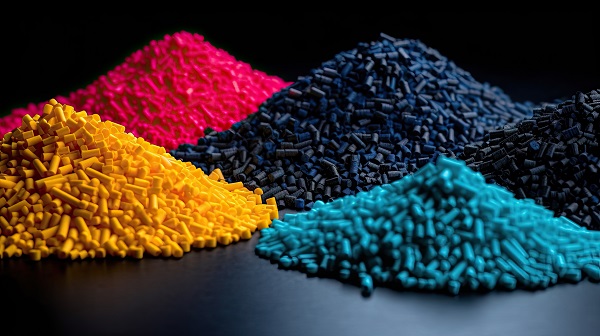Today, polyethylene compounds have gained significant demand in the plastic industry, creating excellent opportunities for investment and export. In this article, we will explore everything you need to know about various compounds and plastic formulations.
What is a Compound?
In materials science and chemistry, a “compound” refers to a combination or mixture. In the plastic industry, different polymer materials can be mixed to produce various types of compound granules, such as polyethylene compounds and polypropylene compounds, each with distinct properties and characteristics. These compounds are used to enhance the physical and chemical properties of polymer products. After reading this page on “What is Polyethylene Compound?” you will have comprehensive and useful information about plastic formulations and compound granules.
How is Polyethylene Compound Produced?
Polyethylene compound manufacturers produce their products by mixing and melting plastics using granulating machines. These granulation factories combine polyethylene plastics with other additives like colorants and UV resistance based on customer orders. For example, the PE100 polyethylene compound is produced by mixing high-density polyethylene (HDPE) with recycled plastic pipes.
Polyethylene formulations can vary greatly depending on the producer’s requirements, as each manufacturer may need specific properties for their product. Therefore, compound granules are entirely custom-made and are not typically available in pre-prepared forms.
Why Use Polyethylene Compounds?
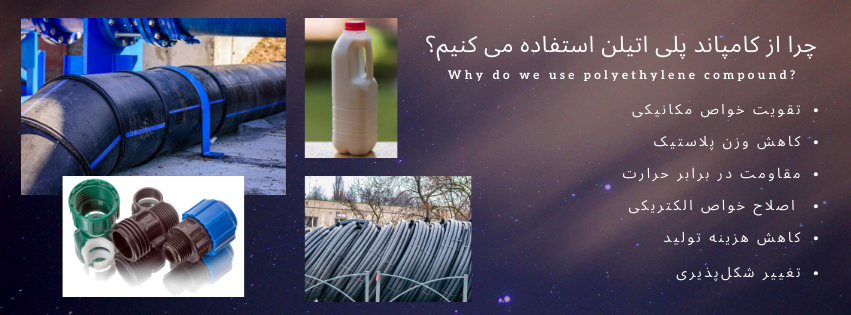
Polyethylene compounds are utilized in the plastic industry for several reasons, including:
-
Enhancing Mechanical Properties: Adding compounds can improve mechanical properties such as flexural strength, tensile strength, and hardness of plastics.
-
Weight Reduction: The use of compounds can significantly reduce the weight of components. For example, incorporating carbon fibers or glass fibers into plastics can lead to a notable decrease in weight.
-
Resistance to Heat and Environmental Conditions: Some compounds enhance the resistance of plastics to high temperatures, heat, moisture, or chemicals. These features are especially important in industries exposed to harsh environmental conditions, such as automotive or electronics.
-
Modification of Electrical or Thermal Properties: By using compounds, the electrical (like conductivity) or thermal properties (such as thermal conductivity) of plastics can be improved.
-
Cost Reduction: In some cases, the use of compounds can lower production costs. Adding compounds can increase the efficiency of manufacturing processes (like plastic injection molding), thus reducing overall production costs.
-
Improved Malleability: Some compounds can enhance the malleability of plastics, making them either harder or softer as needed.
Thus, the use of compounds in the plastic industry is beneficial for various reasons, and these materials are employed to provide the necessary features for diverse applications under different conditions.
Additives in Polyethylene Compounds
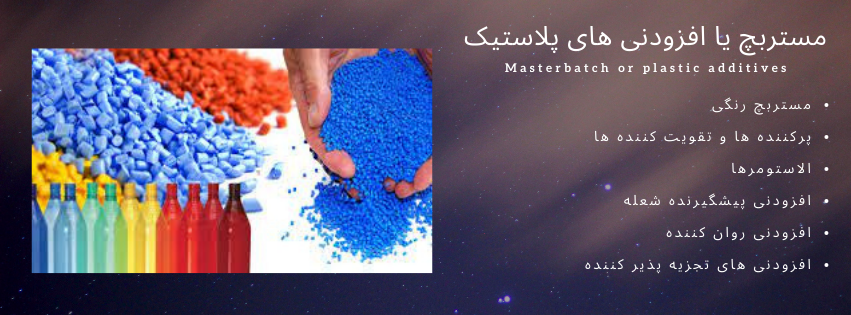
Additives in Polyethylene Compounds
Additives, or masterbatches, are a type of plastic granule primarily used to alter color, protect against UV radiation, enhance scratch or tear resistance, or even to accelerate the degradation of plastics in the environment.
Types of Plastic Additives
- Color Masterbatch
- Fillers and Reinforcements
- Elastomers
- Flame Retardants
- Plasticizers
- Degradants
It is important to note that masterbatches differ significantly from polyethylene compounds, as will be explained further.
Difference Between Polyethylene Compound and Masterbatch
Polyethylene compounds can be directly converted into plastic products, whereas masterbatches cannot be produced on their own and must be added in small percentages to granules. Essentially, masterbatches are additives used for specific features like color or UV protection.
For example, customers ordering compound granules can specify their desired color, and the granule producer is required to melt the masterbatch with the polymer materials to create the desired colored compound granule.
Types of Compound Granules
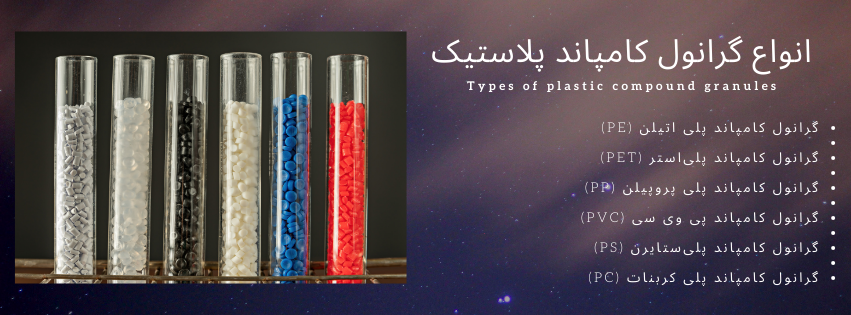
In the plastic industry, various types of compound granules refer to polymer materials enhanced by adding other substances. Below are some common types of compounds (polymer blends) used in the industry:
- Polyethylene Compound (PE)
- Polyester Compound (PET)
- Polypropylene Compound (PP)
- PVC Compound
- Polystyrene Compound (PS)
- Polycarbonate Compound (PC)
Types of Polyethylene Compounds
There are two main types of polyethylene compounds:
- High-Density Polyethylene (HDPE)
- Low-Density Polyethylene (LDPE)
High-Density Polyethylene (HDPE)
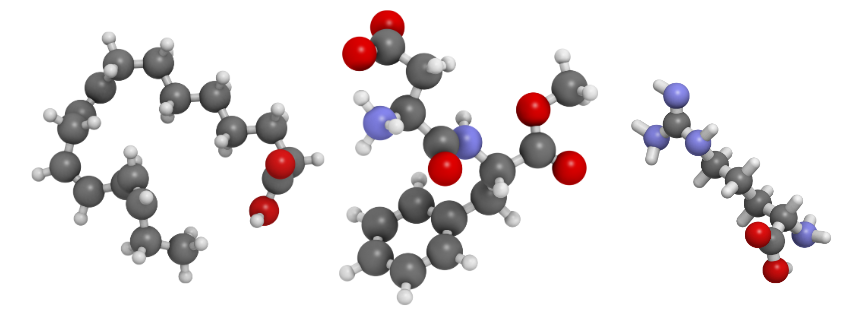
HDPE is recognized as polyethylene with a higher molecular weight (greater than standard polyethylene). This type contains longer polymer chains, resulting in a denser material that offers greater strength compared to standard polyethylene. HDPE is commonly used in producing water and gas pipes and containers resistant to pressure and shock.
Low-Density Polyethylene (LDPE)
LDPE is known as polyethylene with a lower molecular weight (less than standard polyethylene). It features shorter polymer chains and a more branched structure, which enhances its flexibility and elasticity. Common uses for LDPE include the production of disposable containers, plastic films, shopping bags, and flexible tubing due to its resistance to breaking.
Pricing of Polyethylene Compounds
The price of polyethylene compounds is typically influenced by various factors, including the type of polyethylene (such as LDPE or HDPE), molecular weight, physical and chemical properties, order volume, market conditions, and the type of manufacturer. Key factors affecting the price include:
-
Type of Polyethylene: LDPE and HDPE have different properties and applications, resulting in varied pricing.
-
Molecular Weight: Higher molecular weight polyethylene usually costs more due to improved mechanical and physical properties.
-
Order Volume: Larger orders often come with significant discounts.
-
Market Conditions: Economic factors and market conditions can influence pricing, including supply and demand dynamics.
-
Type of Manufacturer: Different manufacturers may offer varying prices based on reputation, quality, and after-sales service.
To calculate the price of polyethylene compounds accurately, it’s best to contact the manufacturer or supplier and provide the order details to determine the final pricing.
Exporting Polyethylene Compounds

Exporting polyethylene compounds represents a significant economic opportunity for Iran. Here are some benefits and pathways for exporting polyethylene compounds:
-
Increased Foreign Currency Revenue: Exporting polyethylene compounds can generate foreign currency income and enhance Iran’s commercial position in international markets, positively impacting the currency exchange rate.
-
Utilization of Local Resources: Iran, with its rich oil resources, can leverage these for polyethylene compound production, thereby increasing added value to the national economy.
-
Expansion of the Polymer Industry: By exporting polyethylene compounds, the polymer industry can grow, contributing to national economic development through job creation and technological advancement.
-
Development of Target Markets: Exporting polyethylene compounds allows Iran to enter new global markets, increasing sales and demand for Iranian polymer products.
-
Strengthening International Cooperation: Exporting polyethylene compounds can enhance trade relationships and international collaboration, facilitating knowledge exchange and foreign investment in the polymer sector.
For successful export operations, Iran needs careful planning, utilization of advanced technologies, quality improvement, effective marketing, and adherence to international standards. Supporting local producers and enhancing export infrastructure will also be crucial for improving the state of the polymer industry in Iran.

